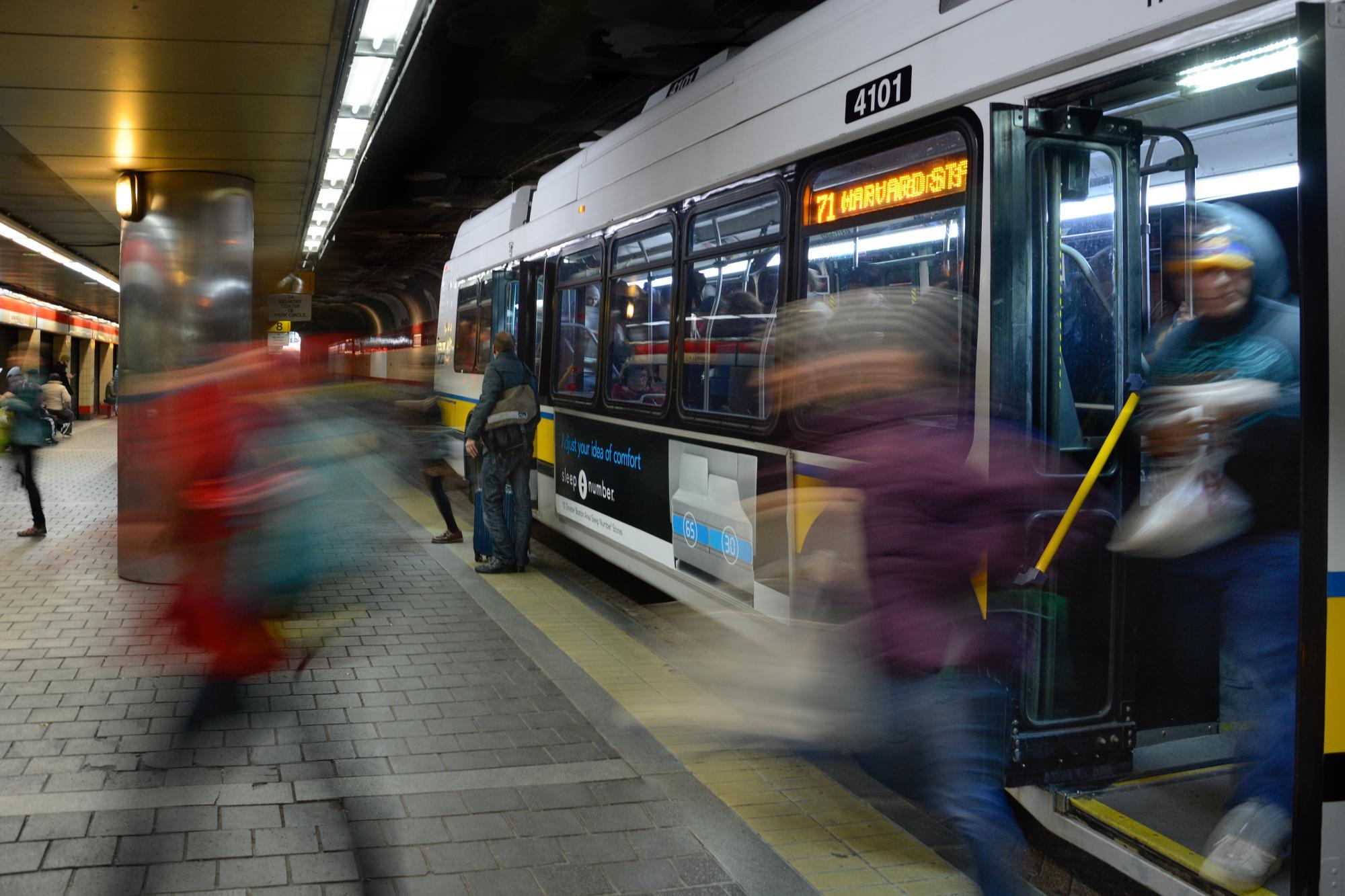How We Used Data to Design an Equitable Bus Network
Updated on September 7, 2022

The Bus Network Redesign team recently released a proposed map of our new bus system. To create the map, the team used a variety of data to help understand travel patterns in our service area and rider needs for bus service.
Tracking Where Riders Travel
One of the primary sources the team used was Location Based Services (LBS) data and metrics from StreetLight Data.
LBS is anonymous cellphone location data that helped us understand where people were traveling on all modes (including driving, walking, and biking).
Since seniors are less likely to own smartphones, we did targeted outreach with the help of the Mass Senior Action Council to confirm that the data we were using was representative of their travel too.
Benefits of understanding where riders travel
Collecting this data gave us three important insights:
- We saw where riders wanted to travel but were unable to using transit because the bus doesn't currently service that area
- Helped us look at all trips, not just work trips to or from residential areas
- Helped us understand where people with low incomes and people of color were traveling
We Learned from Riders, Transit Advocates, the Census, and More
In addition to LBS data, we looked at census data, rider surveys, and land-use and roadway data. We also used expertise from transit advocates, municipal staff, and elected officials.
Our Data-informed Metrics for Designing an Equitable Bus Network
The Bus Network Redesign team analyzed the data it collected, then designed a set of metrics (listed below) to measure how our proposed bus network would serve riders.
The team built equity checks into our "type of service provided" and "network competitiveness" metrics to make sure we were providing equal or better bus access to people of color and people with low incomes in our service area.
We measured the quantity of our bus service using the Revenue Vehicle Miles (RVM) metric. RVM tells us just how much service we are running and shows how many miles buses travel in our system.
The RVM of a single bus route, for example, would be the length of that route multiplied by the number of buses that travel along that route each day. More frequent bus service would have a larger RVM.
We used the coverage standard in our Service Delivery Policy (SDP) to measure how far riders live from a transit stop or station.
We measure coverage in two ways:
- Base coverage determines the percent of residents living within 0.5 miles of any transit service
- Frequent service coverage determines the percent of residents living within 0.5 miles of service that runs every 15 minutes on weekdays and every 20 minutes on Saturdays and Sundays
What is "competitive" transit?
Transit competitiveness accounts for different factors that make people more or less likely to choose transit for a trip. Those factors include service frequency, the number of transfers you have to make, how far you have to walk, and how long you need to wait for your bus.
We measured our bus network's competitiveness using the following metrics:
- Trip coverage looks at all the trips that are already being made in the region on all modes (including by car). It shows how many of those people have a competitive transit option in our current network and in the proposed network
- Regional access evaluates the percent of all residents in the region that can access a single set of "regional destinations," such as Downtown Boston and the Longwood Medical Area, using a competitive transit option
- Local access evaluates the percent of all residents in the region that can access their own unique set of "local destinations," such as pharmacies and grocery stores, using a competitive transit option
Our current bus network is complex—some routes have multiple variants, don't run on all days of the week, and have dramatic scheduled frequency changes. One of our goals with the network redesign is to simplify the system.
We asked the following questions to evaluate each route in our current and proposed network to see whether it was simple enough to use:
- Are service frequencies relatively consistent all day every day?
- Is service available every single day of the week?
- Does the bus regularly take different paths?
Compare simple routes in our current and proposed bus network
Contact Information
If you need help using any of the resources linked here or want to request more specific data, email us at opmi@mbta.com.
For other questions and comments related to the Bus Network Redesign, contact us at BetterBusProject@mbta.com.
